13 Global Trade
Objectives
- Identify autarky and free trade equilibriums
- Map world price to trade flows (imports / exports)
- Identify winners and losers of free trade
- Draw and examine effects of a tariff
- Know arguments against free trade
This section studies global trade. We begin by studying the basic ‘autarky’ equilibrium, which features not trade. We then introduce two cases of trade: imports and exports. We follow by examining the effects of introducing a tariff on imports.
13.1 Definitions
We briefly visit some definitions for trade:
13.2 Autarky and World Market
We now develop our baseline autarky equilibrium, which is simply the equilibrium when no trade is allowed. Our domestic demand and supply induces the autarky equilibrium. This leads to an equilibrium price of $12 and quantity of 100.
We also visit the world market, which features the world supply and demand that induce an equilibrium world price of 12.
13.3 Free Trade
13.3.1 Imports
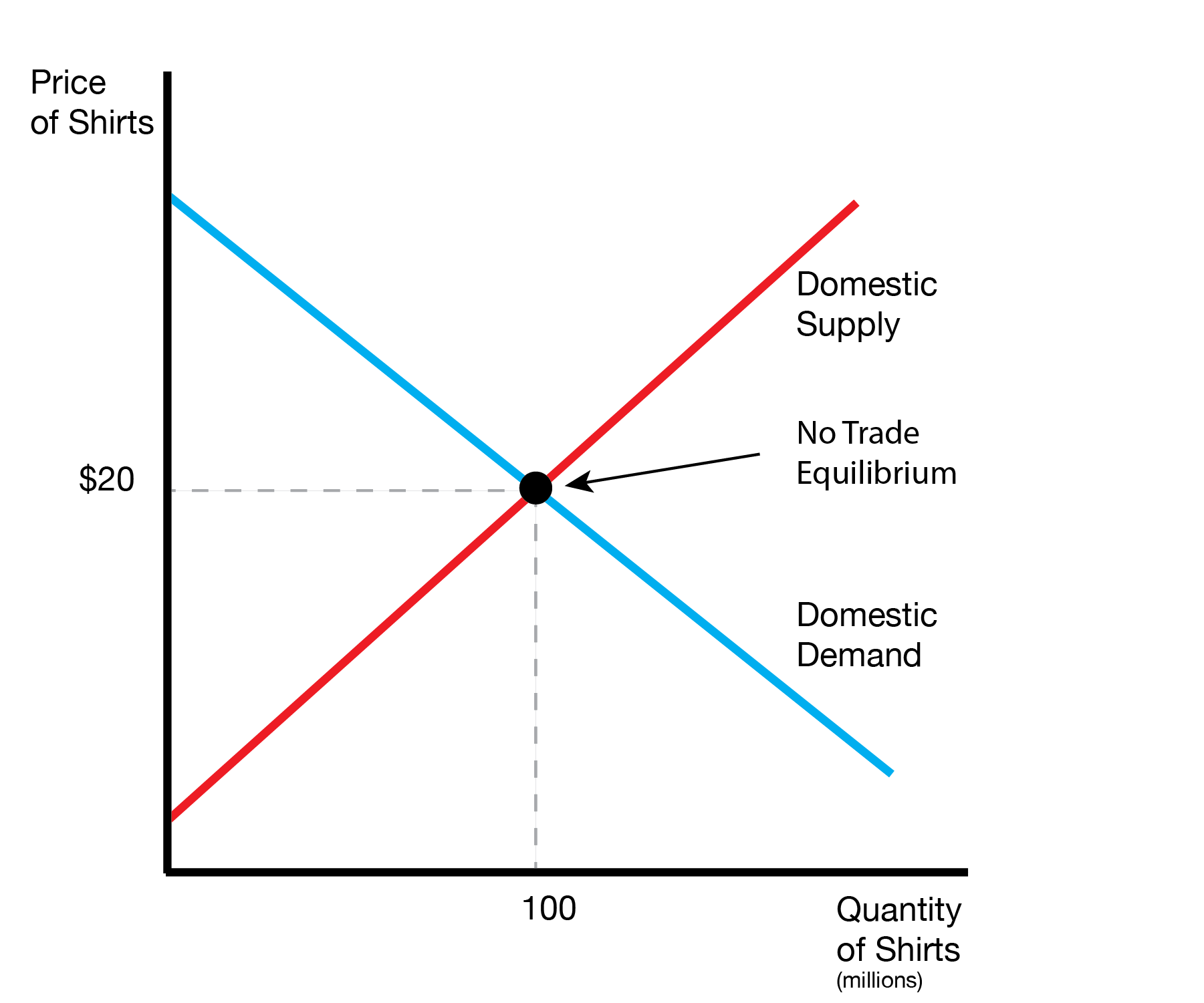
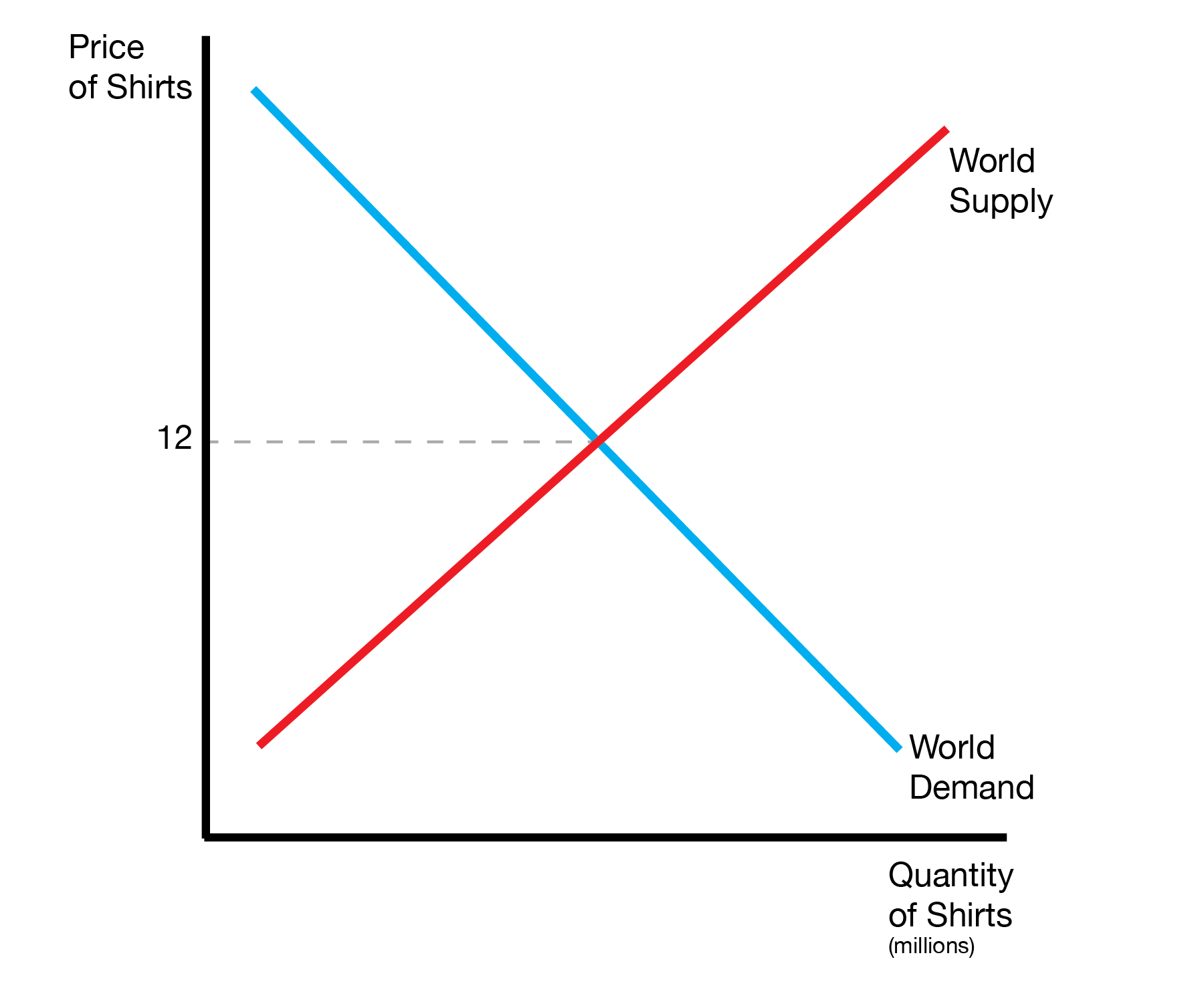
We now allow for trade. Customers can buy a shirt for two prices: $20 from home or $12 from abroad. So long as the world sells shirts for $12, consumers will purchase from abroad. Therefore, if a domestic seller wants to sell a shirt, they must sell it for $12.
As a result, the world price of $12 will become the new ‘equilibrium’ price in the domestic. We represent this by the vertical world price line. As the lower price, domestic consumers demand 140 shirts, and domestic producers supply 40 shirts. In autarky, this would be a shortage, but domestic consumers imports the difference of 100.
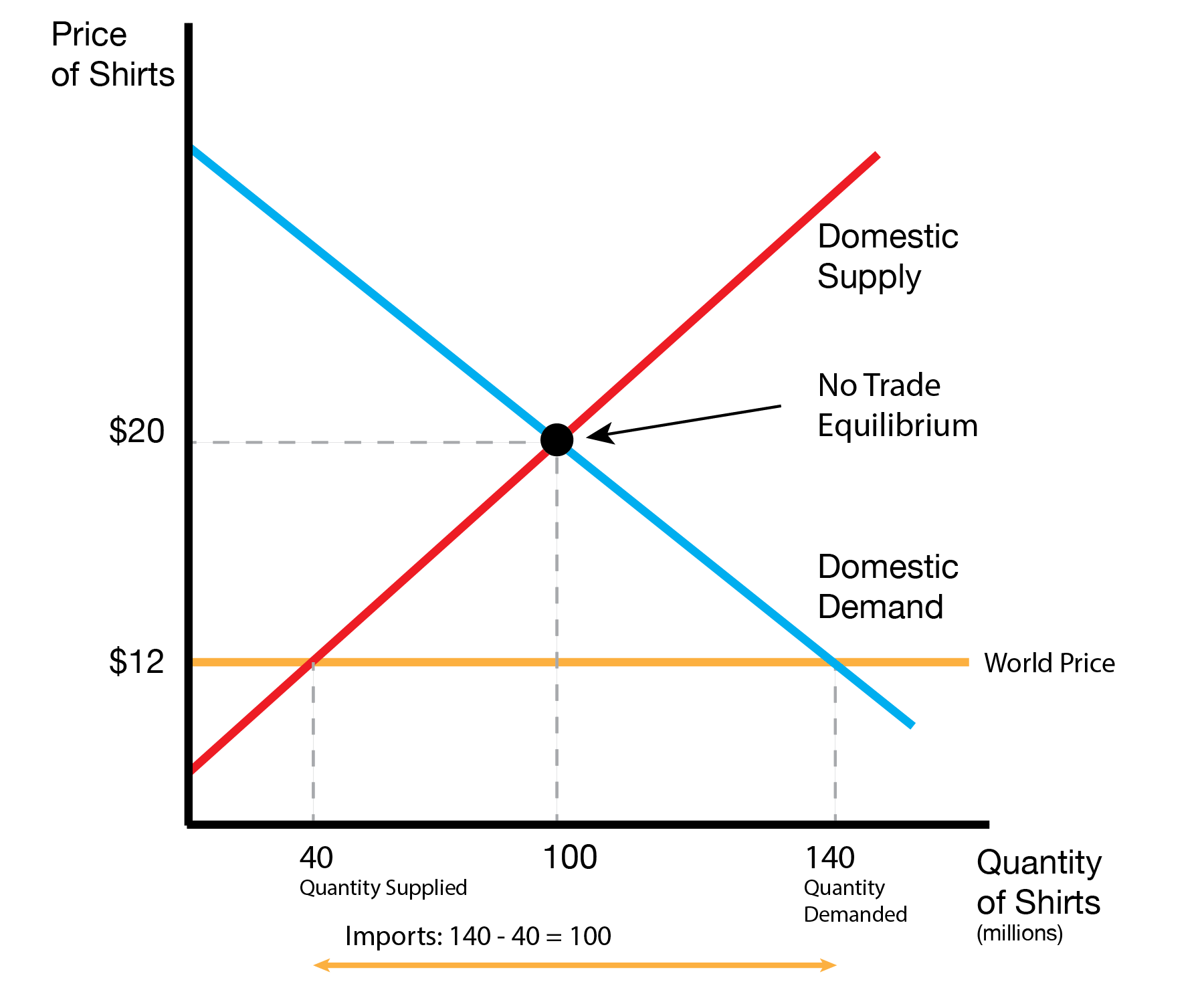
We now study how trade changes the welfare of the consumer and producer. The price has moved from $20 to $12. As a result, consumers have gained areas B and C, and producers have lost area B and D. The total change in welfare is an increase of area C.
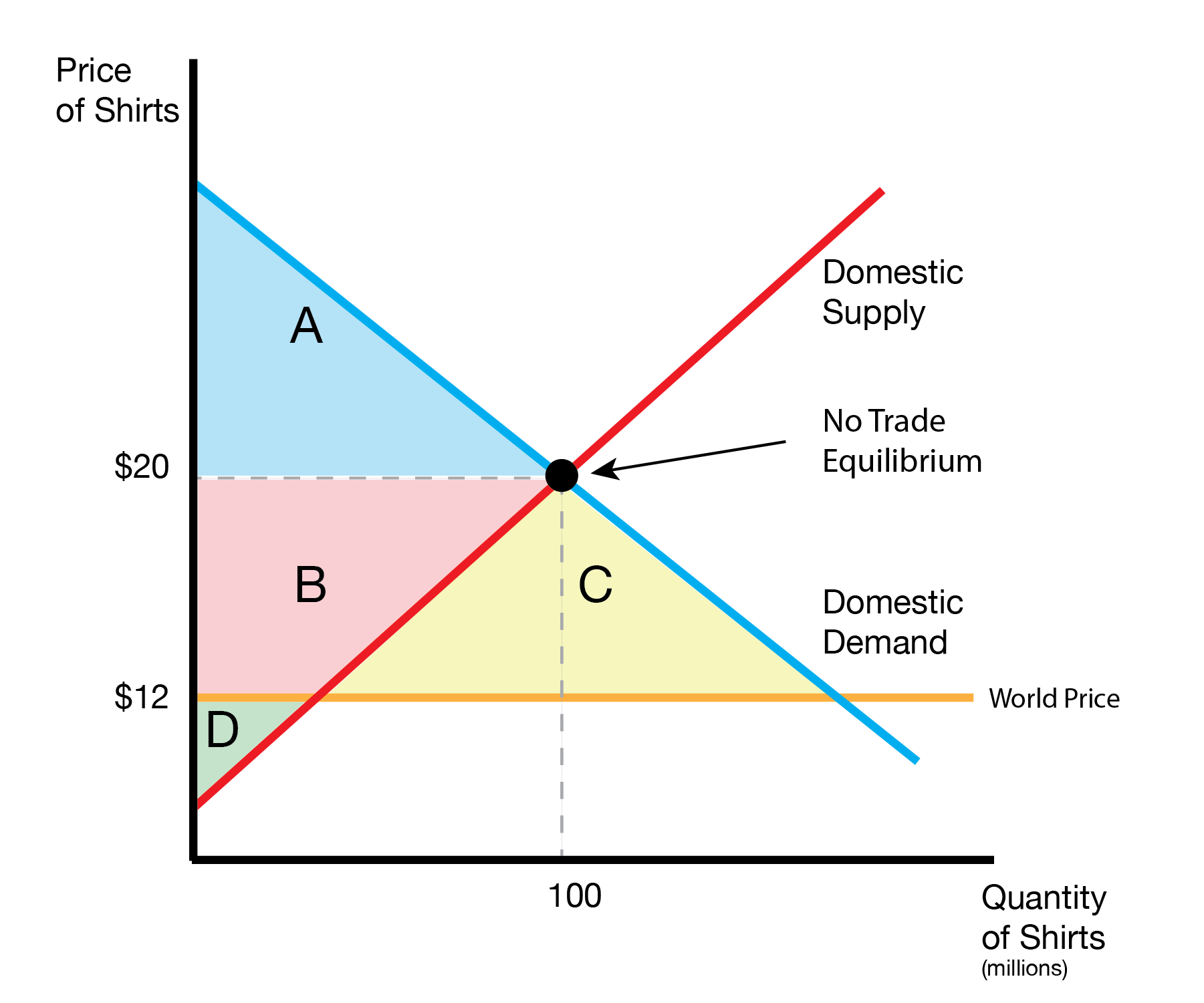
| Group | Welfare Gained / Lost |
|---|---|
| Consumer | Gain: B, C |
| Producer | Lose: B, D |
| Economy | Gain: C |
13.3.2 Exports
We now consider the case of exports. Consider the domestic and world markets for snowmobiles.
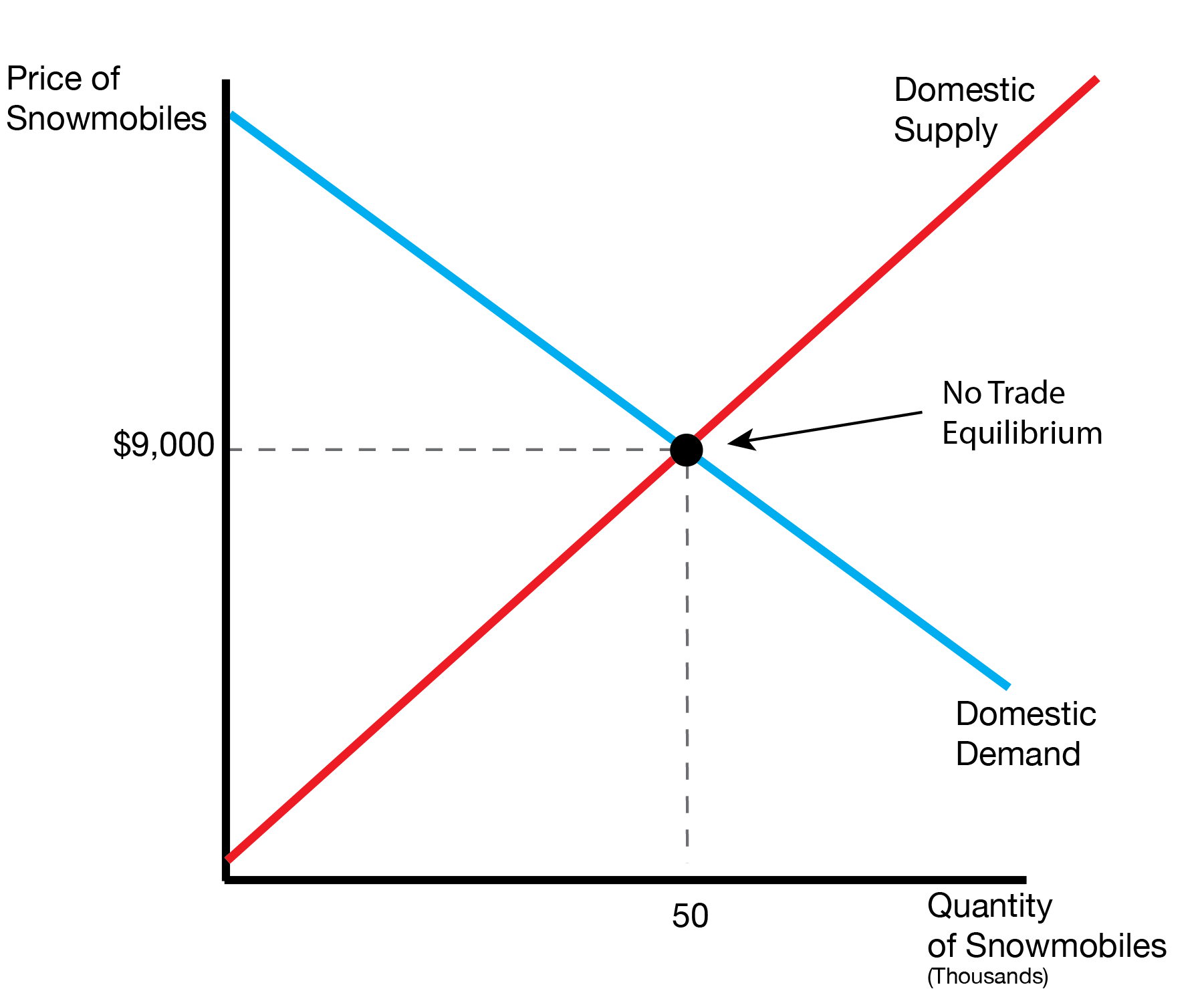
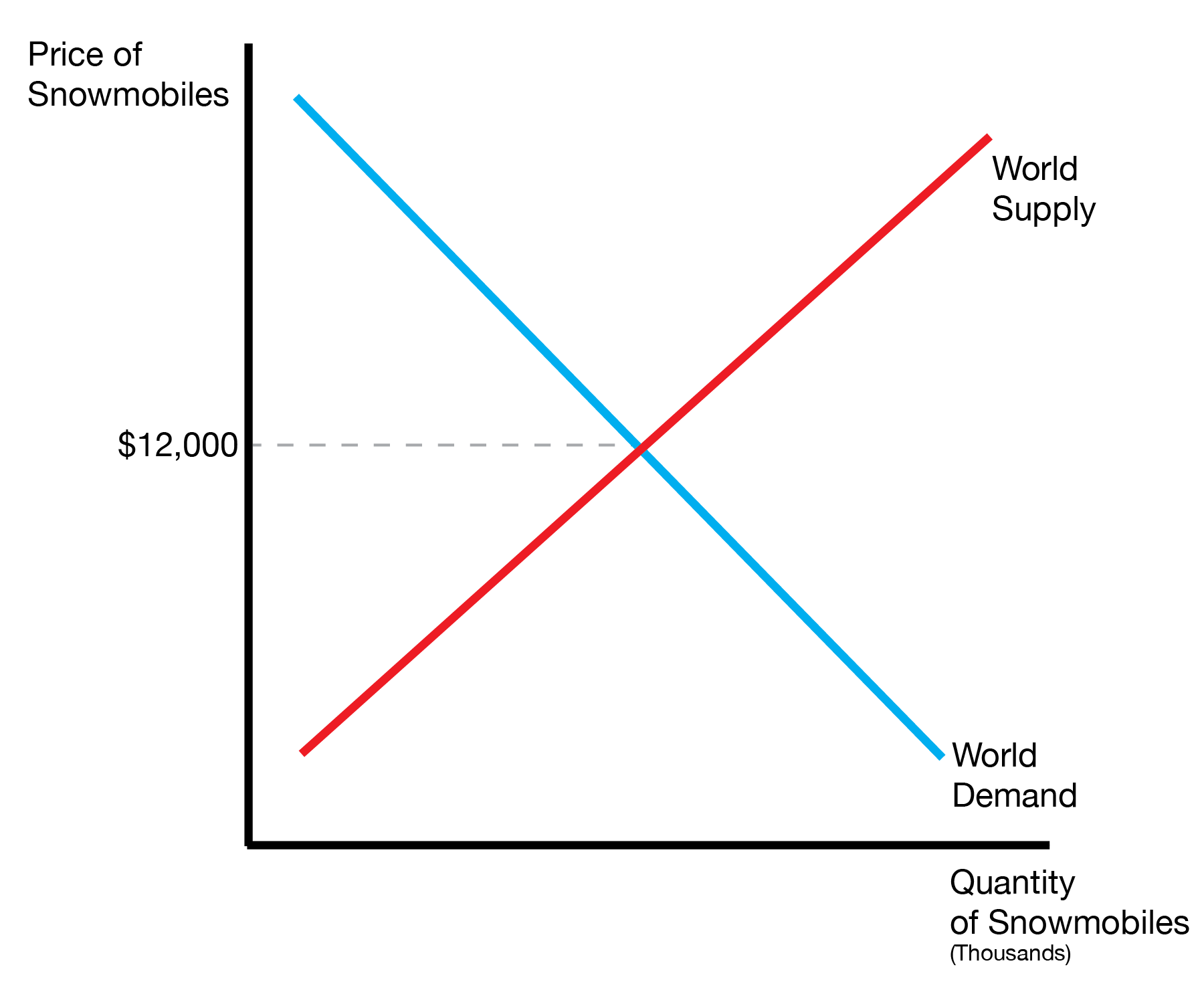
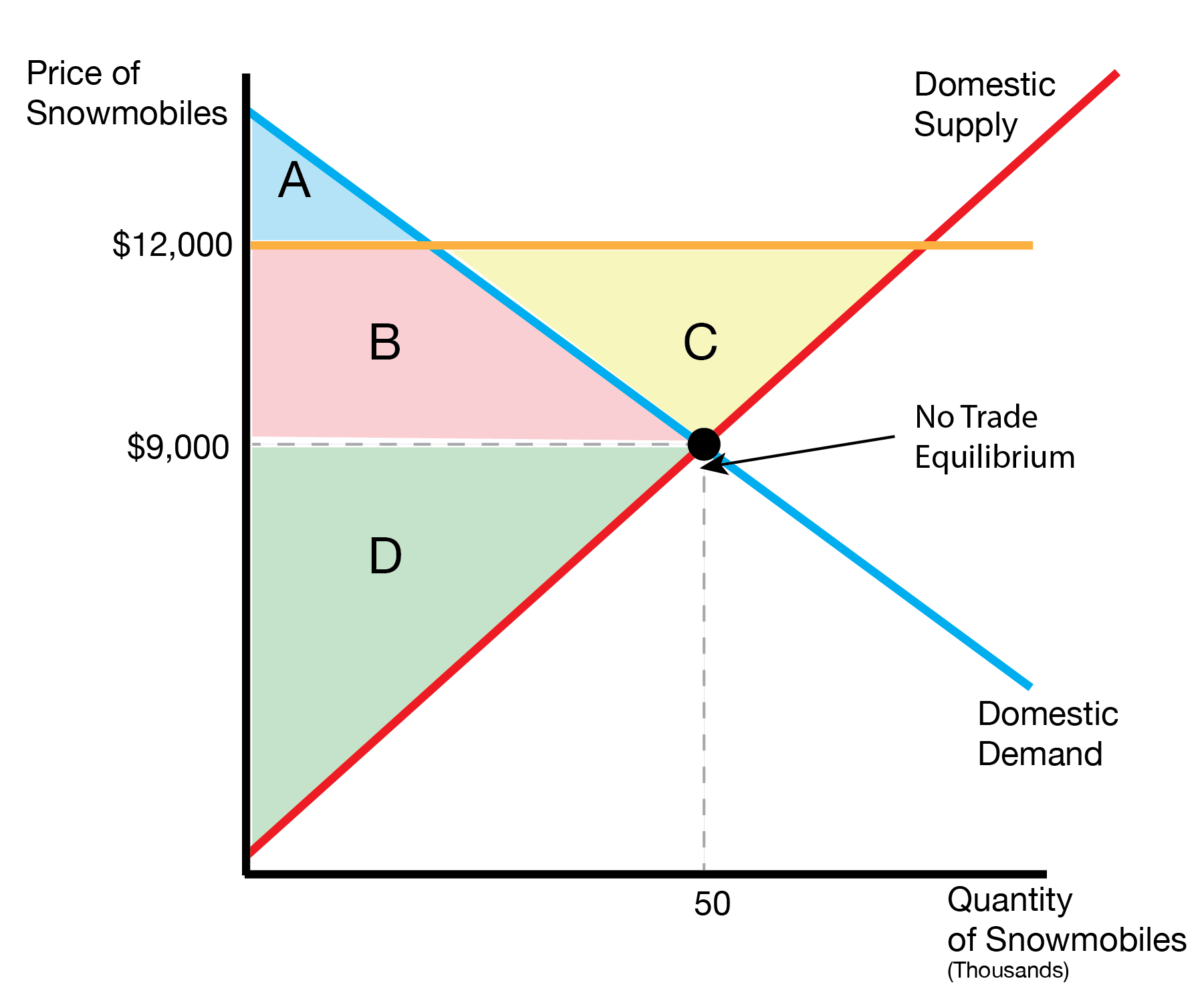
13.4 Government
13.4.1 Tariff
This section studies the effects of introducing a tariff.
The tariff leads to an increase in the price that home consumers have to pay.
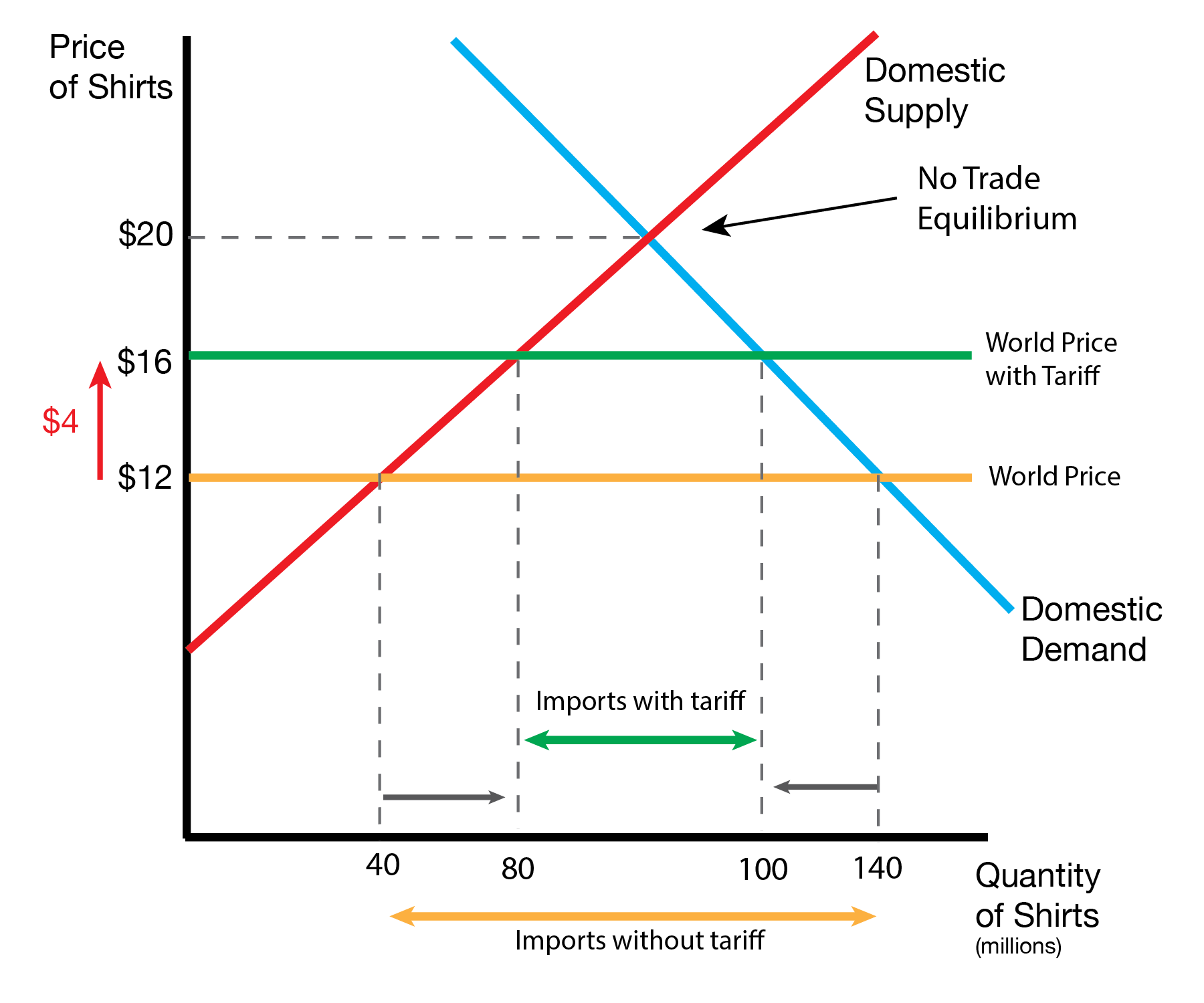
| Group | Effect | Reason |
|---|---|---|
| Consumers | Lose | Higher domestic price → pay more and consume less; loss of consumer surplus |
| Producers | Benefit | Higher domestic price → gain producer surplus and expand output |
| Economy | Lose | Lose gains from free trade |
13.5 Arguments Against Trade
| Argument | Explanation |
|---|---|
| National Security | Is irrelevant for most industries; ignores power of substitution |
| Infant Industry | Long history of failed infant industries |
| Job Losses | Higher imports aren’t associated with higher unemployment |
13.6 Conclusion
- This lecture introduces global trade
- Our model can easily create winners and losers of international trade …
- … depending on whether the economy imports or exports
- We introduce the tariff policy intervention, which is welfare reducing